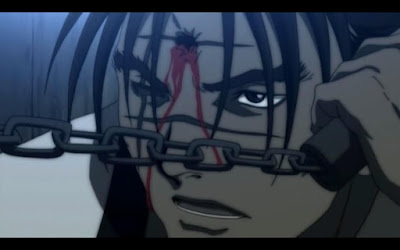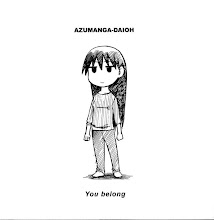Blade of the Immortal takes place in the shogunate era of Japan Japan
With the guidance of an old Buddhist nun she is introduced to a scruffy swordsman named Manji to hire as a bodyguard while she is on her path to redemption. Manji offers an advantage to her goal in the fact that he is nearly immortal. Years earlier Manji went on a rampage killing samurai responsible for the death and dishonor of his father. The 100th and final samurai he fought was his sister’s husband. The killing blow was dealt in front of her, causing her to close up and revert mentally to a child. The old nun found Manji on his deathbed and fed him magical worms that spread through out his body, healing all of his wounds, restoring him to life. Manji, feeling guilt over the state his sister was in, decided to dedicate his life to caring for her, until one day when she was murdered by a group of bandits. After her death he vowed to the nun that he would repent for his sins of killing 100 good guys by killing 1000 bad guys. Once he reaches his goal she would have to remove the cursed worms from his body so that he may join his sister in death. Seeing an opportunity to help Manji she points Rin in his direction.
Now, with an almost unstoppable killing machine by her side they set out on the path of vengeance against Rin’s parent’s killers. Along the way they both must face personal awakenings and physical danger as they immerse themselves into a plot much bigger then either imagines.
So I have been a fan of the manga since the mid 90’s and right from the beginning had dreamed of an anime. At first I was hesitant when seeing the trailers as I wasn’t keen on the detail in the artwork. The manga is highly detailed. I overcame my objection with the art after watching the first episode understanding that it would be expensive to replicate the level of detail found in the manga. The simplicity of the design in the anime worked well. The series was mostly faithful with the manga, they added in a few things that didn’t take place in the manga at specific points but it actually helped with the story. As the manga evolved, more and more elements were introduced, with the anime they began introducing them early on. In the manga it seems as if Samura didn’t have a set idea when he started and evolved it as he went. With the anime they could introduce those elements earlier, giving them more depth and understanding. The anime quickly pounds through the first few issues of the comic, covering the beginnings of the journey of growth and revenge, while touching the surface of the grander schemes being formulated in the shadows. Then, it ends. The anime is only 13 episodes that leave nothing resolved and more questions and plot lines in the wings, waiting. The end of the final episode points to more coming in the future, but with the fickle anime industry that is very questionable.
While it was only 13 episodes long and barely scratched the surface of the story I was still quite happy with the result. I have no complaints with the anime aside form the soundtrack, which at first was cool but then got grating as the same music continued to be played, over and over and over again in each episode. The animation, while simple, fit well and was executed properly. The voices for the characters that I have only imagined for over a decade did not disappoint my hard core nerd aesthetics. The translation of the manga to anime was quite faithful and the things they changed were done for the better. All in all it was a very satisfying anime and even if more never gets made I don’t feel any loss. At least this was created and did justice to this long running and personal favorite manga. One question remains from the anime though, and that is the continued eluding to Manji being placed in modern times. In both the opening/ending credits and the eye catches between commercial breaks they show images and scenery of the modern word. Weird...
The anime was licensed for release in North America by Media Blasters. The entire manga, 31 volumes, is available through Dark Horse comic.









No comments:
Post a Comment